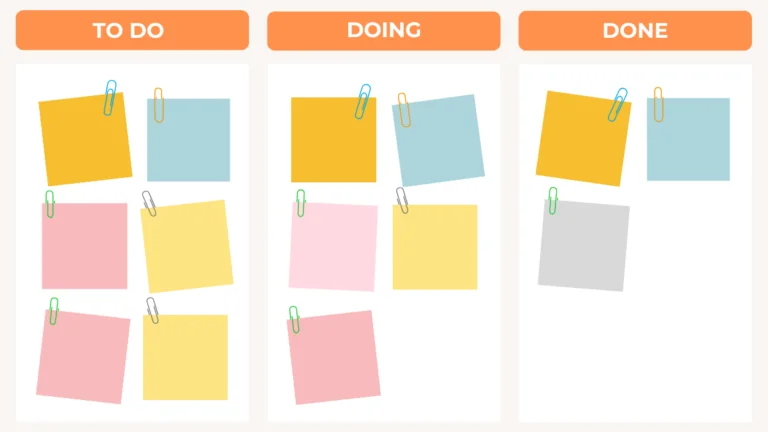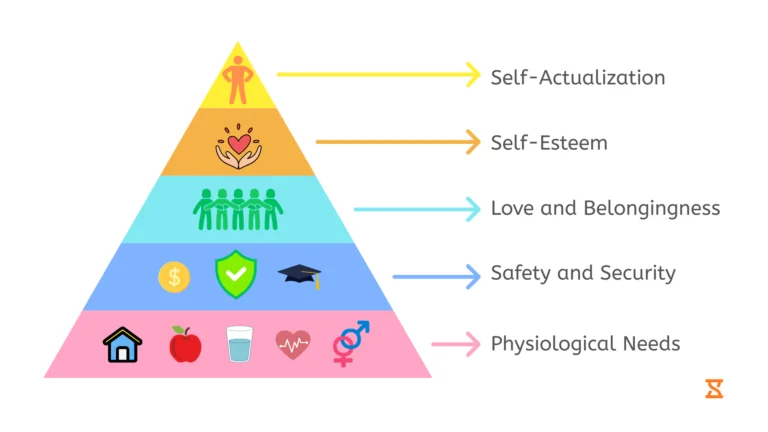8 Best Methods of Organizing Time
2025
Have you ever felt like there aren’t enough hours in the day? You start the morning with a clear plan, but before you know it, your inbox is overflowing, meetings have eaten up half the day, and you’re drowning in a sea of unfinished tasks. Sound familiar? You’re not alone.
The modern workday is filled with distractions, and without a solid strategy for organizing your time, it’s easy to get stuck in a cycle of busyness, but without real progress.
The good news is that you don’t have to rely on willpower alone to stay productive. There are proven methods that can help you take control of your time and get more done.
In this article, we’ll break down the eight best techniques for managing and tracking your time.
Whether you’re struggling with prioritization, focus, or simply feeling overwhelmed, these methods of organizing time will give you the tools to reclaim your day.

Photo by Ocean Ng on Unsplash
Why Do You Need to Organize Time?
Time is the one resource you can never get back. Once it’s gone, it’s gone forever. That’s why mastering time management is more than just a productivity hack – it’s a life skill for success.
Without a system in place, your days can quickly spiral into chaos, leaving you feeling like you’re constantly playing catch-up. Between never-ending emails, back-to-back meetings, and an ever-growing to-do list, it’s easy to feel like you’re working hard, but never actually making progress.
The reality is that productivity isn’t about working more hours – it’s about working smarter. Effective time management helps you focus on what truly matters, reduces stress, and allows you to make meaningful progress instead of just staying busy for the sake of it.
What Are the Risks of Not Organizing Time?
When you’re constantly jumping between tasks, feeling distracted or overwhelmed, you end the day exhausted with little to show for it. This lack of time management leads to stress, burnout, and missed deadlines, impacting both your career and personal life.
Some risks of not getting on top of organizing your time include:
- Falling behind on work: Without a clear system, important tasks can pile up, causing you to fall behind. As work continues to accumulate, it becomes harder to catch up, creating unnecessary pressure.
- Procrastination: Without structure, it’s easy to unknowingly delay tasks, especially when they feel overwhelming. This procrastination leads to last-minute scrambling and subpar results.
- Becoming distracted: If you don’t organize your day, you’ll find yourself distracted by everything from social media to random tasks. This constant switching between activities makes it hard to stay focused and productive.
- Reduced productivity: Without proper planning, you’ll end up jumping from one task to another, rarely completing anything. This lack of focus makes your workday less productive overall.
- Missed deadlines: Focusing on the wrong tasks can result in missed deadlines. Not managing your time effectively leads to rushing through projects or neglecting critical tasks altogether.
- Increased stress: Without a time management system, you’re likely to feel overwhelmed by all the work piling up. This stress can lead to burnout, as you never feel like you’re making progress.

Image by Art Attack on Unsplash
Let’s dive into the best strategies that can help you take charge of your schedule and reclaim your time:
#1 The Kanban Method – Make Your Work Visible
If you’ve ever felt like your workload is overwhelming and unstructured, the Kanban method might be the perfect fix.
The Kanban method is a super simple yet effective way to keep track of all your tasks. Originally created for manufacturing, it’s all about creating a visual system to help you see your work as it moves through different stages of completion.
Here’s how it works:
- Set up your Kanban board: You’ll create a board with a few basic columns. The column furthest to the left is the starting point, such as “sales enquiries”. The column furthest to the right is the end point, such as “client handover”. Columns in between show each stage of a task journey in a linear, consecutive order.
- Get started: When you start a task, add it to the appropriate column to get the process started.
- Move tasks as you go: Each task is represented by a card (could be a sticky note or a “digital card”, depending on what tool you’re using). These cards move from left to right as milestones are achieved, tracking the progress of each task visually.
- Keep the flow going: Kanban is all about keeping things moving. When you look at your board, you should get a clear picture of where each task stands, which helps you stay on track of progress and avoid forgetting about elements of your to-do list.
- Limit work in progress: One key rule with Kanban is to limit how many tasks are in each column at a time. If all your tasks are bunching up in one column, focus your energy on progressing those items in order to get things moving again.
By breaking your tasks into categories – such as “to-do,” “in progress,” and “done” – you can easily see what needs to be tackled next. Whether you use sticky notes on a whiteboard or digital tools, Kanban helps prevent work from piling up and ensures you’re always moving forward.
When you see your tasks progressing, it gives you a sense of momentum and control, making work far less overwhelming.
#2 The Pomodoro Technique – Sprint, Rest, Repeat
Have you ever sat at your desk for hours, feeling like your brain is turning to mush? That’s because our attention span has limits.
Enter the Pomodoro Technique – a simple but effective way to break work into manageable chunks.
Here’s how it works: set a timer for 25 minutes and focus on a single task. When the timer goes off, take a 5-minute break. After completing four of these “Pomodoros,” reward yourself with a longer break of 15-30 minutes.

Image by Mohamed Hassan on Unsplash
This method works because it keeps your brain engaged while preventing burnout. Instead of dragging yourself through a marathon work session, you’re doing short, focused sprints.
It’s like high-intensity interval training, but for productivity. By working in these concentrated bursts, you stay sharp and actually get more done in less time.
You can also use the Pomodoro method for studying. It works great for studying by helping you stay concentrated without burning out. After every four sessions, you take a longer break to recharge. It’s a solid way to manage your studies and keep your brain fresh.
#3 The Ivy Lee Method – Plan Tomorrow, Today
Sometimes the simplest methods are the most effective. The Ivy Lee method was developed over 100 years ago to help improve productivity within manufacturing. Today, it can help you organize your time and get on top of your to-do list.
At the end of each workday, write down the six most important tasks you need to complete tomorrow. Prioritize them in order of importance, then the next day, start with the first task and work your way down the list. What you don’t get done gets rolled over into the following day.
That’s it. No complex strategies. No decision fatigue. Just a clear, focused plan.
This method works because it forces you to decide in advance what truly matters, rather than reacting to whatever feels urgent in the moment. It’s like laying out your clothes the night before – future you will be grateful for the head start.
#4 The Pareto Principle – The 80/20 Rule
Ever feel like you’re drowning in work, but only a small portion of it actually moves the needle? That’s where the Pareto Principle can help. Also known as the 80/20 rule, it states that 80% of your progress comes from just 20% of your effort.
The trick is identifying which tasks fall into that crucial 20% which provides the biggest impact, and then focusing more of your time and energy on those tasks, rather than the other 80% which produces less results.
What work generates the biggest impact? What activities are just busy work? Once you pinpoint where your efforts are best spent, you can start eliminating or delegating the rest.
Think of it like a chef in a busy kitchen – they know which dishes are the best sellers and focus on perfecting them rather than wasting time on items no one orders. Apply this to your own workload, and you’ll find yourself achieving more by doing less.
#5 Maslow’s Hierarchy of Needs – Prioritize the Right Way
Maslow’s pyramid is a psychological theory that suggests we have different levels of needs, starting from basic survival to higher-level fulfillment. The idea is that we must satisfy lower-level needs before we can focus on higher ones.
However, most people stop there and don’t reflect on how this applies in practice to our daily lives. It’s also a fantastic tool and mindset for time management and productivity. The idea is simple: before you can focus on complex tasks, you must take care of the fundamental needs.
If you’re exhausted, hungry, or mentally drained, no amount of productivity hacks will help. Your priority should always be your well-being. That means getting enough sleep, eating nutritious meals, and taking breaks when needed.
Think of it like trying to build a skyscraper without a solid foundation – it won’t stand for long.
Furthermore, you must get the fundamental tasks on your to-do list done before the intricate details can be taken care of. There is no point in starting sales calls if you haven’t first decided on a sales strategy and script.
#6 The Flowtime Technique – Customize Your Focus and Breaks
If rigid timers like Pomodoro feel restrictive, the Flowtime Technique offers a more flexible approach. Instead of fixed intervals, you work on a task until your focus naturally fades. Whether it’s 20 minutes or 90, it doesn’t matter. Take a break when you feel you need to.
You log how long you worked and rested, helping identify your ideal focus windows over time. This method adapts to your energy levels rather than forcing you into a set routine, making it ideal for those with fluctuating attention spans or creative workflows.
Use a journal, spreadsheet, or app to track sessions and spot productivity patterns. With consistency, you’ll learn when you’re most effective and how long you can stay focused without burnout.
Flowtime promotes deep work without artificial cutoffs, but it does demand self-discipline. If you struggle with structure, this method might require extra effort to stick with.
#7 The ALPEN Method – Daily Planning Made Simple
The ALPEN Method, developed by German economist Lothar J. Seiwert, is a fast, structured way to plan your day with realistic expectations. It follows five steps:
- Aufgaben – List all tasks.
- Länge schätzen – Estimate how long each will take.
- Pufferzeiten einplanen – Add buffer time (20–30% of your total schedule).
- Entscheidungen treffen – Prioritize your tasks.
- Nachkontrolle – Review what you completed and adjust for tomorrow.
This method helps balance your workload with built-in flexibility. It prevents overcommitment by accounting for interruptions, and its quick daily setup makes it easy to sustain.
Ideal for structured thinkers, ALPEN gives you a clear, prioritized, and adaptable daily plan without complexity.

Image by Alvaro Montoro on Unsplash
#8 The ABC Method – Prioritize with Laser Focus
The ABC Method sorts tasks into three categories:
- Category A: Urgent and important; must be done today.
- Category B: Important but not urgent: should be done soon.
- Category C: Low-priority: nice to do but non-essential.
Start with category A tasks, and don’t move on until they’re complete. B and C tasks only get attention after A tasks are finished.
This method forces prioritization and eliminates busywork disguised as productivity. It’s especially useful for managing long to-do lists and ensuring your time goes toward high-impact activities.
Simple and effective, the ABC Method helps you act on importance, not convenience.
A helpful tip:
Reassess your task list midday. Sometimes, something that was a B in the morning becomes an A by the afternoon if deadlines shift or priorities change.
How to Implement These Methods in Daily Life
The right strategies can help you stay organized, reduce stress, and make the most of your day, but with so many techniques out there, how do you know where to start?
- Start Small and Build Momentum: Trying to implement all eight methods at once will be overwhelming. Instead, pick one technique that resonates with you, and commit to using it for a week. Mastering one method first will help you build consistency before layering in others to create a system that fits your work style.
- Use the Right Tools: Leverage digital aids like a productivity tracker to manage where your time is spent, a Pomodoro Timer for implementing the Pomodoro technique, or simply a journal for the Ivy Lee method to prioritize your tasks. While some prefer digital tools, others choose to use notebooks, print posters, or keep simple visual reminders nearby to stay organized.
- Reflect, Adapt, and Improve: Observe how these methods impact your productivity over a period of time. If something isn’t working, tweak your approach and keep going. Time management isn’t about rigidly sticking to one system – it’s about evolving your strategy to fit your needs and lifestyle.
Benefits of Mastering Time Management Methods
Mastering different methods of organizing time isn’t about cramming every available minute with more work – it’s about working smarter, not harder. It’s about creating a system that helps you stay organized, focused, and productive without feeling overwhelmed.
When you manage your time effectively, you’re not just improving your work balance – you’re freeing up time for yourself, reducing stress, and making space for the things that truly matter.
Kanban helps you visualize your work. Maslow’s hierarchy ensures you’re taking care of the essentials first. The Pomodoro Technique keeps you energized, the Ivy Lee method simplifies your planning, and the Pareto principle ensures you’re focusing on what truly matters.
On top of that, the Flowtime Technique customizes your work sessions to match your natural rhythm, the ALPEN Method offers a practical blueprint for daily planning with built-in flexibility, and the ABC Method brings sharp prioritization to a cluttered to-do list.
Mix and match these techniques to fit your personal workflow, find yourself with more time, less stress, and a whole lot more productivity. Because at the end of the day, time isn’t the problem – it’s how you manage it that makes all the difference.




